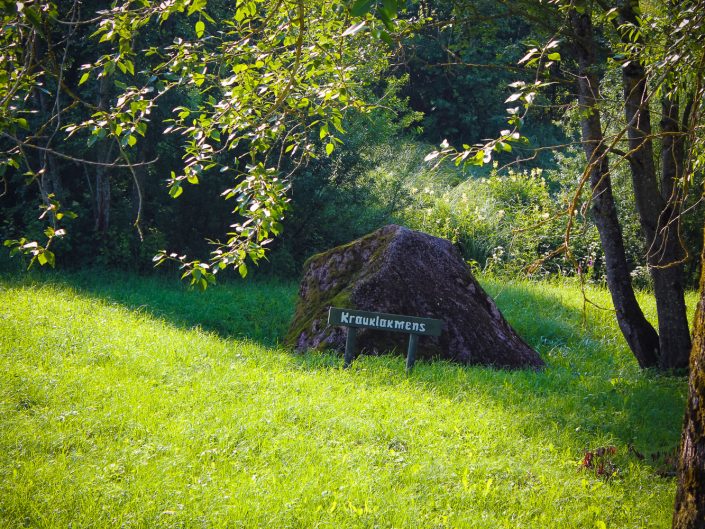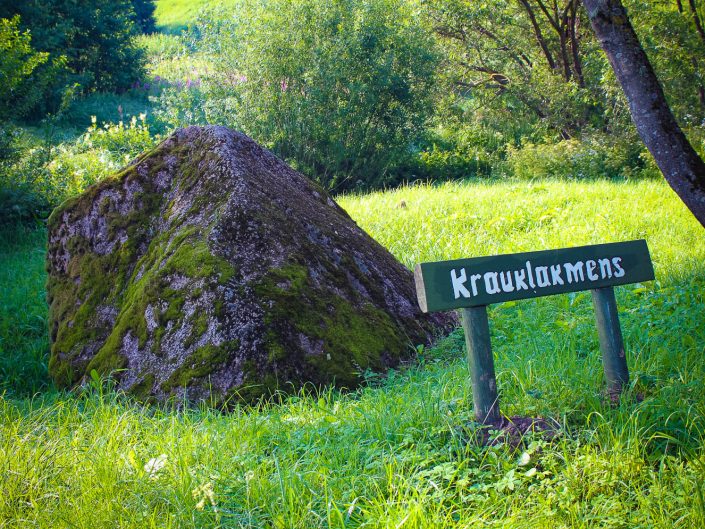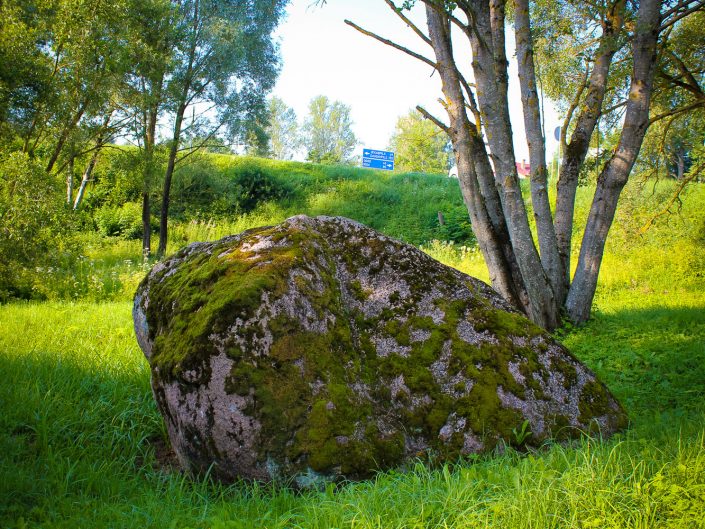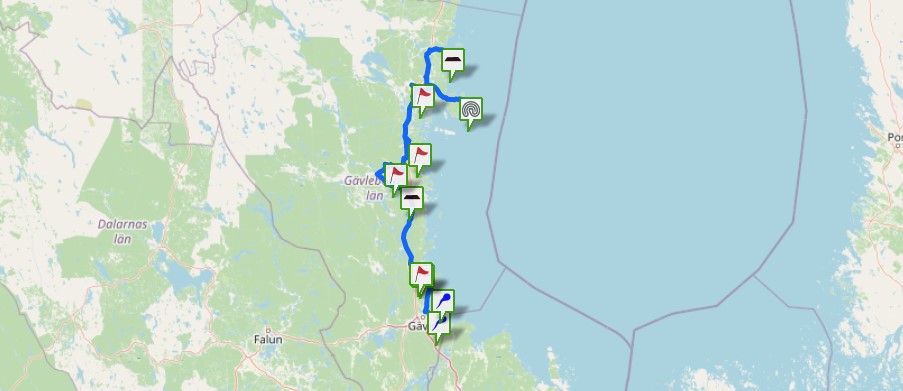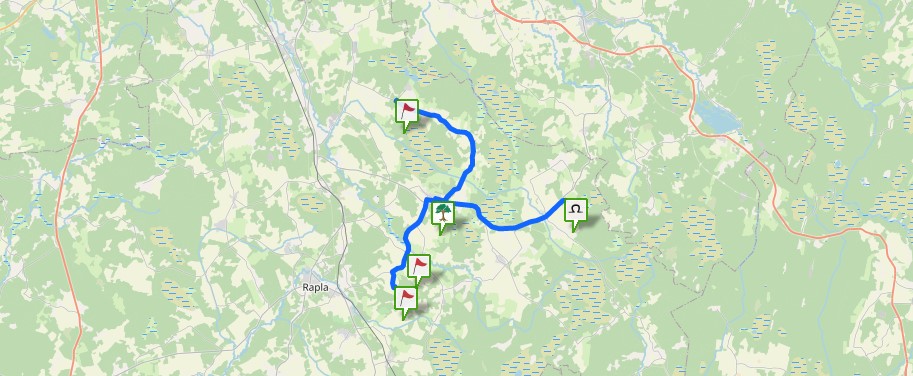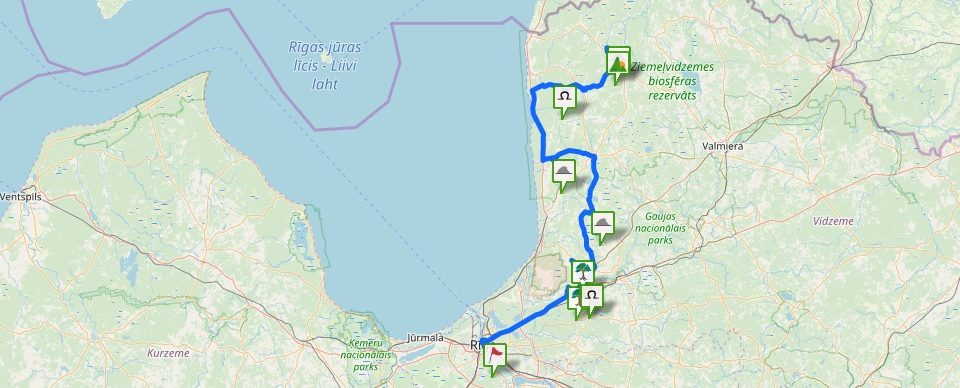Length of the stone 3,9 m, width 3,8 m, height 2 m, circumference 12,5m. On the W side of the stone there is a 1,05 m long, up to 7 – 8 cm deep groove. The stone has been tried to be split by someone, but the works have failed leaving its surface damaged.
There are many legends and stories devoted to the stone, including stories about hidden treasure. Under the guidance of J.Urtans archaeological excavations were carried out at the stone in 1974 – it was established that probably it is a cult stone from 12th/ 13th century. The stone is also called Devil’s Stone – tale No.861,197. For more information see: Urtans V., Briede I., Urtans J. Aizkraukle field-works in 1974 // Research report session materials about the results of studies by archaeologists and ethnographers in 1974. – Riga, 1975 – p.92-93: „Stories tell a pot with money was hidden under the stone, and the Devil intended to fill up the River Daugava by means of the pot; it is said it was sacrificed at the stone. The stone is located in a marshy valley, nearby a streamlet. Circumference at the bottom – 12,5 m, height – 2 m. There is a 1m long and 0,08 m deep carved groove on its surface and a drilled hole in it, which was intended for blasting the stone. / From 21st till 27th July the Aizkraukle field-works’ group carried out excavations at the Kraukli Stone. A 35 m² area was marked around it. By removing the topsoil a black, peaty occupation layer (0,8 m thick) was discovered, while the layer on the NW side of the stone was 1,2 m thick. Predominantly the layer consisted of bluish, clayey sand. Many small coals, shards of glazed tableware, tiny iron waste materials, nails, dross, half of an iron footstep from 12th century, whetstone, remains from a wooden tub, small sawn horn tablet. … Considering the findings, there was a smithy located close to the stone. / The excavations did not provide a clear answer, whether the Kraukli Stone had been used for cult purposes.” The valley, where the stone is located, had been called Money Ravine and people had imagined that the treasury form the Swedish war had be buried there. Before WWI “government officials” from Petersburg had been looking for the treasures.
Archaeology monument – cult site. The stone has been referred to in the novelette by A.Upitis – “Sūnu ciema zēni” (The Boys of Moss Village). Not far from the stone there is the Aizkraukle castle mound, which is also called the Kraukli Hills.

